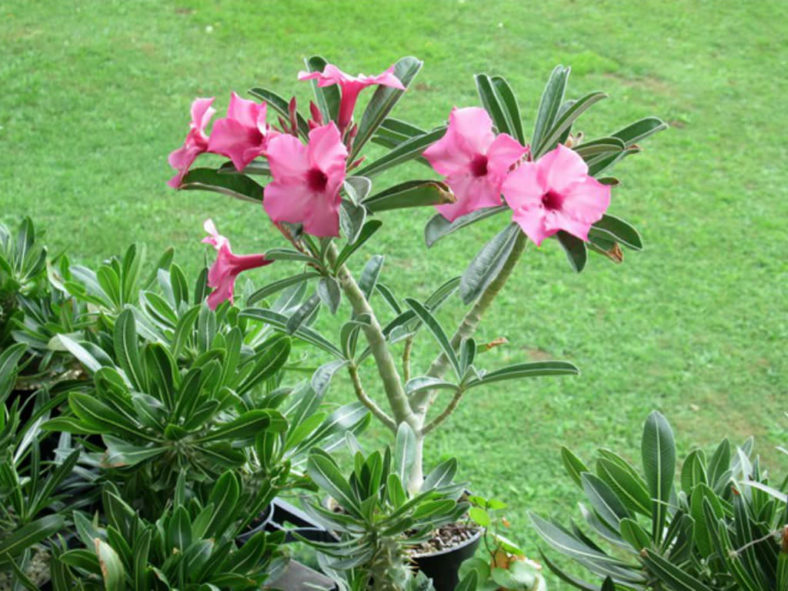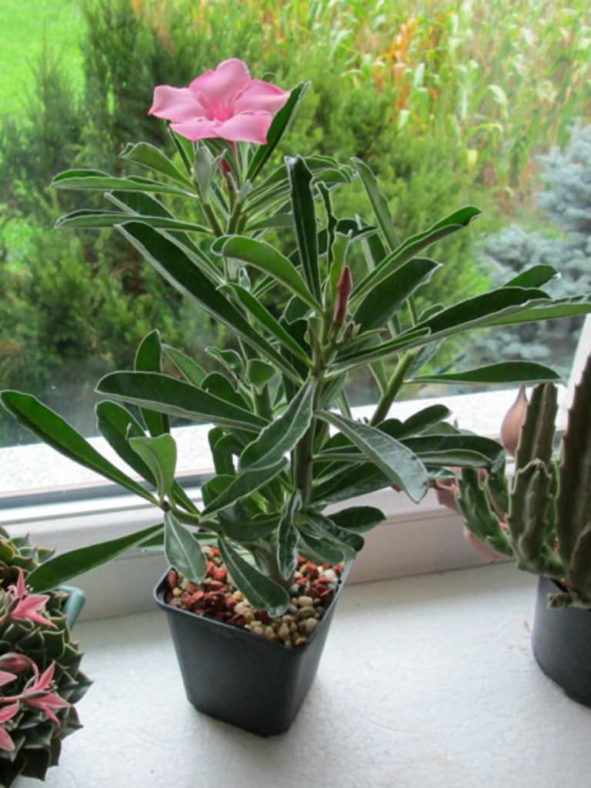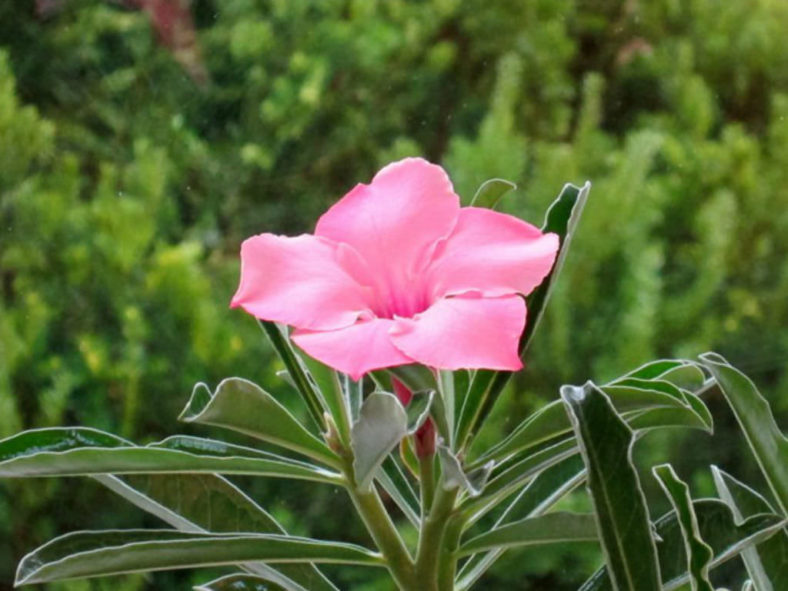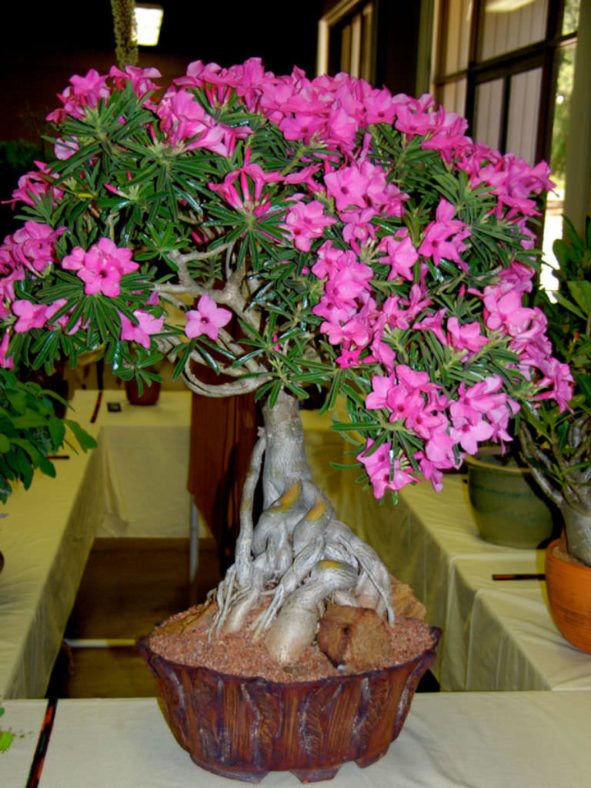Scientific Name
Adenium obesum subsp. swazicum (Stapf) G.D. Rowley
Common Name(s)
Desert Rose, Impala Lily, Summer Impala Lily, Swazi Lily
Synonym(s)
Adenium swazicum, Adenium boehmianum var. swazicum
Scientific Classification
Family: Apocynaceae
Subfamily: Apocynoideae
Tribe: Nerieae
Subtribe: Neriinae
Genus: Adenium
Origin
Adenium obesum subsp. swazicum is native to Swaziland, southern parts of Mozambique, and South Africa (Mpumalanga and northern KwaZulu-Natal). Its main habitat is open, dry woodland and grassland.
Description
Adenium obesum subsp. swazicum, also known as Adenium swazicum, is a dwarf, deciduous, succulent shrub with a basal stem that produces branches ranging from greenish to greyish. It can grow up to 28 inches (70 cm) tall. The basal stem is short, swollen, sometimes partially buried, and can reach up to 6 inches (15 cm) in diameter. The leaves are glossy green and clustered at the ends of the branches, measuring up to 4 inches (10 cm) long and 1.2 inches (3 cm) wide.
The flowers are showy, pink to deep reddish-pink, usually with a darker throat, and appear mainly from late summer to fall. They can reach up to 2.8 inches (7 cm) in diameter.

Hardiness
USDA hardiness zones 10a to 11b: from 30 °F (−1.1 °C) to 50 °F (+10 °C).
How to Grow and Care
These are not difficult plants to grow well, provided they get enough sunlight and warmth. However, like all succulents, they cannot tolerate sitting in water, and if you err, do it on the side of too little water. Use a specialized soil mix designed for cacti and succulents.
Repot as needed, preferably during the warm season. To repot a Desert Rose, ensure the soil is dry before repotting, then gently remove the plant from the pot. Knock away the old soil from the roots, removing any rotted or dead roots. Treat any cuts with a fungicide and antibacterial solution. Next, place the plant in its new pot and backfill with potting soil, spreading the roots out as you repot. Leave the plant dry for a week or so, then begin to water lightly to reduce the risk of root rot.
The Desert Rose is typically propagated by seed. If your plant develops a seed pod, sow the seeds as soon as possible after the pod ripens to maximize the chances of germination. Desert Rose can also be propagated from stem cuttings, but this plant often fails to develop the characteristic (and highly desired) bulbous stem.
Links
- Back to genus Adenium
- Succupedia: Browse succulents by Scientific Name, Common Name, Genus, Family, USDA Hardiness Zone, Origin, or cacti by Genus
Photo Gallery
Click on a photo to see a larger version.


